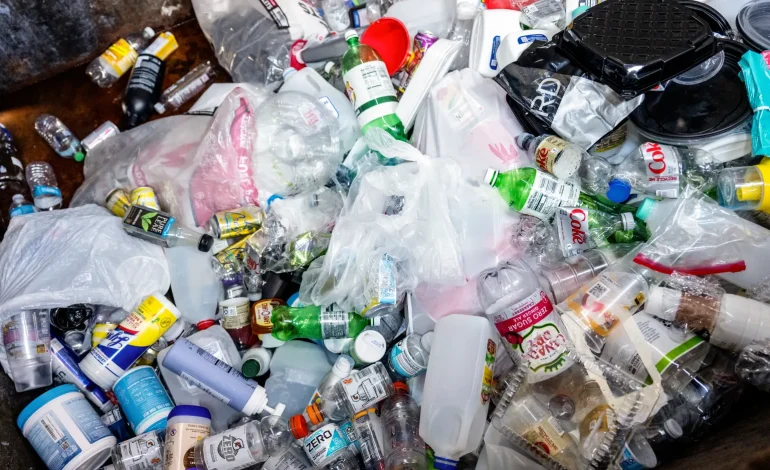Recent studies suggest that the growing presence of microplastics in our environment could be taking a hidden toll on our appearance, particularly when it comes to skin health, New York Post reports.
A new visual report from a leading waste management company in the UK has revealed how different levels of exposure to microplastics may affect facial features, shedding light on the long-term effects of this global pollutant.
Microplastics—tiny particles measuring less than 5 millimeters—are found in everyday items ranging from beauty products to food, drinks, and even the air we breathe. These particles break off from larger plastic objects over time and are now present in human bodies, detected in organs including the lungs, kidneys, blood, and even the brain.
While much research into the health effects of microplastics is still in its early stages, there are growing concerns about the potential damage they could cause to organs and cells. Studies suggest that the ingestion of microplastics may lead to increased risks of chronic conditions such as heart disease, cancer, and infertility. Now, a visual report has focused on how prolonged exposure to these particles could have visible impacts on the skin.
The report uses AI-generated images to illustrate the effects of different levels of microplastic exposure on the human face. For individuals with low exposure, which typically comes from food, drinks, and the environment, the effects are more subtle, such as skin irritation, redness, and dryness. Experts attribute these changes to the interaction between microplastics and endocrine disruptors, which can interfere with hormonal balance and affect skin health.
As exposure levels increase, particularly for those who consume processed foods, seafood, or frequently use synthetic fabrics, the effects become more pronounced. In these cases, premature signs of aging, such as wrinkles and fine lines, may appear due to the oxidative stress caused by microplastics. Other physical effects could include increased fatigue, digestive issues, and skin irritation, while individuals in highly polluted areas may experience breathing difficulties as well.
The most severe effects are observed in those with high, sustained exposure, which may occur in environments with high plastic pollution or through constant use of synthetic textiles. High exposure can lead to chronic skin conditions, including eczema-like rashes, skin discoloration, and lesions that are slow to heal. The risk extends to other parts of the body as well, with potential impacts on lung function, memory, and motor skills.
While completely avoiding microplastics is virtually impossible, experts suggest several steps to reduce exposure. Ditching single-use plastics, particularly in food and drink containers, filtering drinking water, and choosing natural fabrics over synthetic ones are among the most effective ways to limit microplastic intake. Additionally, opting for organic, whole foods over processed ones and avoiding plastic-based beauty and cleaning products can help reduce the amount of plastic entering the body.
The broader issue, however, remains the global plastic waste crisis. Mark Hall, a plastic waste expert and founding director of Business Waste, emphasized the need to tackle plastic waste on a larger scale to address the root of the problem. He noted that while individuals can take steps to reduce exposure, true change will require a collective effort to reduce our reliance on plastic.










The latest news in your social feeds
Subscribe to our social media platforms to stay tuned